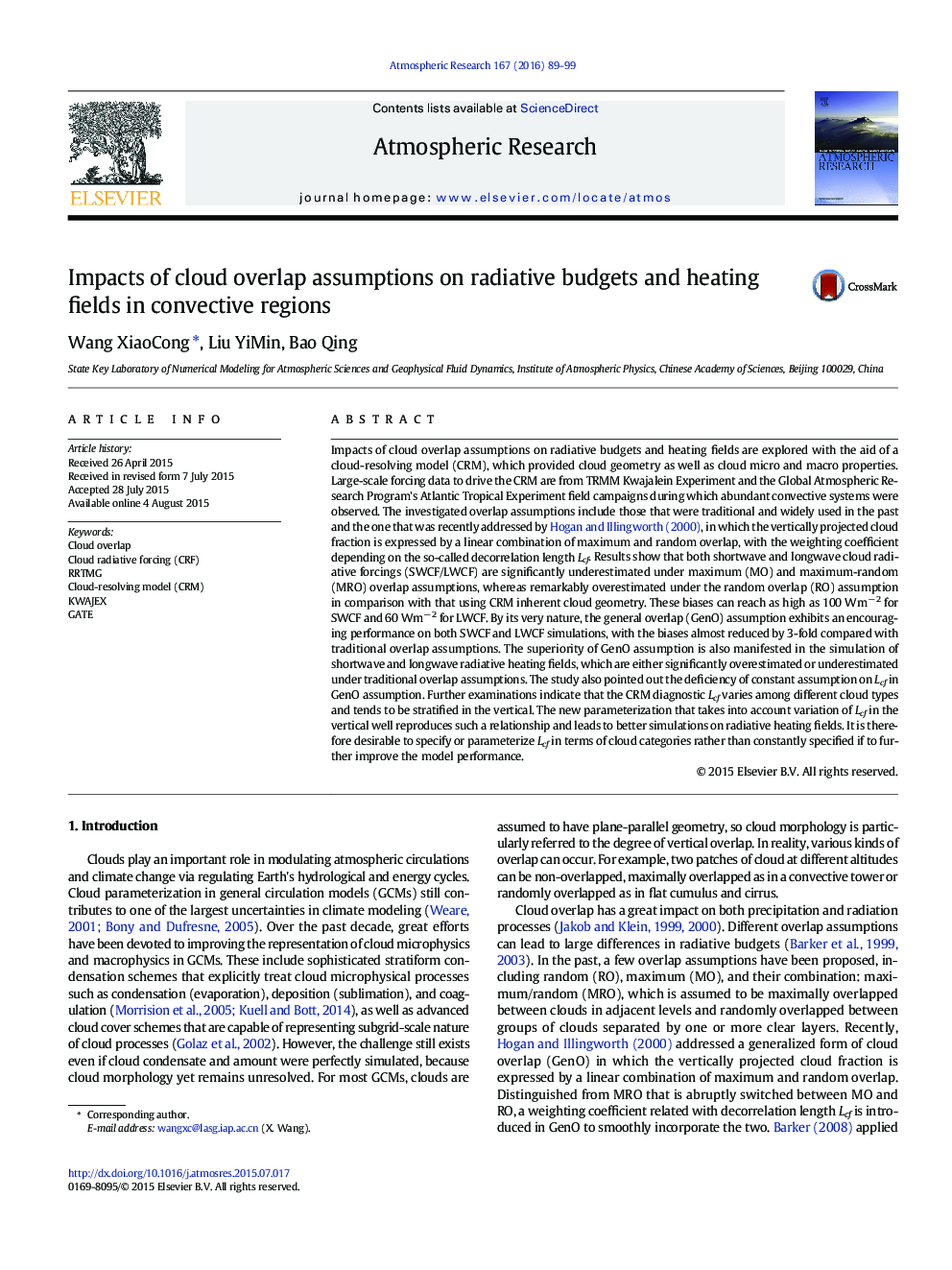| Article ID | Journal | Published Year | Pages | File Type |
|---|---|---|---|---|
| 6343142 | Atmospheric Research | 2016 | 11 Pages |
Abstract
Impacts of cloud overlap assumptions on radiative budgets and heating fields are explored with the aid of a cloud-resolving model (CRM), which provided cloud geometry as well as cloud micro and macro properties. Large-scale forcing data to drive the CRM are from TRMM Kwajalein Experiment and the Global Atmospheric Research Program's Atlantic Tropical Experiment field campaigns during which abundant convective systems were observed. The investigated overlap assumptions include those that were traditional and widely used in the past and the one that was recently addressed by Hogan and Illingworth (2000), in which the vertically projected cloud fraction is expressed by a linear combination of maximum and random overlap, with the weighting coefficient depending on the so-called decorrelation length Lcf. Results show that both shortwave and longwave cloud radiative forcings (SWCF/LWCF) are significantly underestimated under maximum (MO) and maximum-random (MRO) overlap assumptions, whereas remarkably overestimated under the random overlap (RO) assumption in comparison with that using CRM inherent cloud geometry. These biases can reach as high as 100 Wmâ 2 for SWCF and 60 Wmâ 2 for LWCF. By its very nature, the general overlap (GenO) assumption exhibits an encouraging performance on both SWCF and LWCF simulations, with the biases almost reduced by 3-fold compared with traditional overlap assumptions. The superiority of GenO assumption is also manifested in the simulation of shortwave and longwave radiative heating fields, which are either significantly overestimated or underestimated under traditional overlap assumptions. The study also pointed out the deficiency of constant assumption on Lcf in GenO assumption. Further examinations indicate that the CRM diagnostic Lcf varies among different cloud types and tends to be stratified in the vertical. The new parameterization that takes into account variation of Lcf in the vertical well reproduces such a relationship and leads to better simulations on radiative heating fields. It is therefore desirable to specify or parameterize Lcf in terms of cloud categories rather than constantly specified if to further improve the model performance.
Keywords
Related Topics
Physical Sciences and Engineering
Earth and Planetary Sciences
Atmospheric Science
Authors
Wang XiaoCong, Liu YiMin, Bao Qing,
